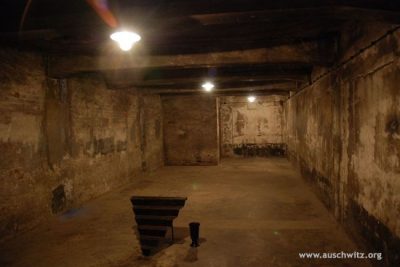Mistakes involving the misleading term "Polish death camp" when referring to the German Nazi camp Auschwitz continue to surface in media outlets internationally. One such instance transpired on the religious portal Il Sismografo, which reports on the activities of the Catholic Church worldwide.
In 2016, Pope Francis visited Poland to meet with participants of the 31st World Youth Day, an event held in Kraków, the former capital of Poland.
On the third day of his pilgrimage, the Pope visited the Auschwitz-Birkenau concentration camp. He walked alone through the entrance gate inscribed with "Arbeit macht frei," lit a lamp in front of the execution wall, and prayed in the cell where Saint Maximilian Maria Kolbe (1894–1941) died a martyr's death.
Kolbe had been sent to Auschwitz in May 1941. In July of that year, ten prisoners were sentenced to death in retaliation for the escape of a fellow inmate. Among them was Franciszek Gajowniczek, who cried out in despair that he would leave behind his wife and children. It was then that Maximilian Kolbe volunteered to take his place—and his offer was accepted. During his stay in Poland, the Pope also met Angela Orosz-Richt, a Jewish woman from Hungary, the only known woman born in Auschwitz to survive infancy. She had been hidden in barracks by her mother, Vera Bein, who was three months pregnant when deported to Auschwitz in May 1944.
Despite brutal medical experiments performed on her by Dr. Josef Mengele, she carried her pregnancy to term. Angela weighed barely one kilogram at birth and was so weak she didn’t cry, likely the reason she remained undetected by camp guards.
When reporting on this meeting, the portal referred to the site as a “Polish concentration camp,” despite correctly describing the atrocities as part of the “Nazi genocide” elsewhere in the article.
The Polish embassy to the Holy See intervened, and the wording was promptly corrected.
More on Angela Orosz-Richt’s story can be found in the article:
‘The last survivors of Auschwitz must speak out’
ih
KL Auschwitz was the largest of the German Nazi concentration camps and extermination centers
Auschwitz-Birkenau was established by the Germans in mid-1940 on the outskirts of Oświęcim, a town which had been annexed into the Third Reich by the Nazis. This happened after Poland’s defeat in September 1939, leading to the division of its territory between the occupying forces: Germany and the Soviet Union.
Initially, the camp was intended for Polish prisoners. Estimates suggest that approximately 130,000–140,000 Poles were transported to KL (Konzentrationslager) Auschwitz and registered with identification numbers, with approximately 10,000 more murdered without being documented. It is believed that at least half of the Polish inmates perished in the camp due to starvation,
beatings, disease, overwork, lack of medical care, executions by shooting or phenol injection, or in the gas chambers. Many others died after being transferred to other concentration camps.
Beginning in the spring of 1942, Jews were transported to KL Auschwitz in separate convoys, although some were deported alongside non-Jewish inmates from various prisons.
From 1942 to 1944, as part of the “Final Solution to the Jewish Question,” (Endlösung der Judenfrage), KL Auschwitz evolved into the largest Nazi centre for exterminating Jews from countries occupied by or allied with the Third Reich.
Most of the Jews sent to Auschwitz during this period — over 1.1 million, including more than 200,000 kids and teenagers — were killed immediately upon arrival or shortly thereafter in gas chambers. These transports were organised by the Reich Main Security Office.

Interior of the gas chamber at Auschwitz.
Fot. Paweł Sawicki/www.auschwitz.org
The largest single group of Jews deported by RSHA to KL Auschwitz consisted of approximately 430,000 men, women, and children deported from Hungary between late April and August 1944. Auschwitz also served as the final destination for about 300,000 Jews from the occupied Polish territories (particularly from areas annexed into the Reich), as well as 73,000 from the Protectorate of Bohemia and Moravia and Slovakia, 69,000 from France, 60,000 from the Netherlands, 55,000 from Greece, 25,000 from Belgium, 23,000 from Germany and Austria (many of whom were routed through the Theresienstadt ghetto-camp in Czechia), 10,000 from Yugoslavia, 7,500 from Italy, and 690 from Norway.
These deportations were primarily orchestrated by German authorities and their foreign representatives.
Source: History KL Auschwitz-Birkenau
The camp was liberated on January 27, 1945, by soldiers of the 60th Army of the First Ukrainian Front, part of the Soviet army. Around 7,000 prisoners were still in the camp at that time. This very camp is still, though fortunately less frequently, referred to as a “Polish camp” in some international media. It is worth recalling that at the 31st session of the UNESCO World Heritage Committee in New Zealand on June 27, 2007, at the request of Poland and Israel, the previous name — Auschwitz Concentration
Camp — was changed to: “Auschwitz-Birkenau. German Nazi Concentration and Extermination Camp (1940–1945).”

COMMENTS